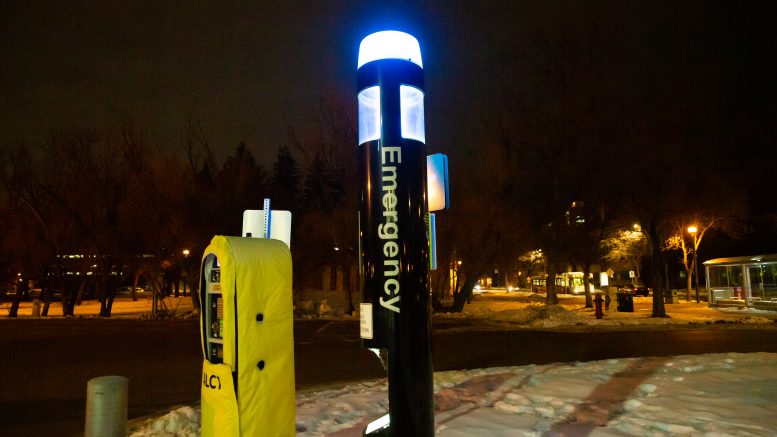As the exam season approaches and the days start to get darker, the U of M is emphasizing the importance of staying safe on campus
According to University of Manitoba director of security Gordon Perrier, exam season can cause students to become distracted and often unaware of their surroundings.
Perrier emphasized that at night, students should put away their phones when walking, and remind themselves to be alert.
“The campus here is 700 acres,” he said. “It is a huge place. It is a small city.”
“From only a statistical point of view, crime events or even policy violations are pretty small, but that doesn’t mean that they don’t occur.”
Although studying alone in secluded areas may be ideal for many students, Perrier indicated that such places may not be the safest option. He said that the U of M has multiple secure studying areas on campus that are brightly lit and conducive to studying privately, like libraries.
Perrier said that while studying, setting time limits and checking in with others is a great way to increase personal safety.
He noted that during the day, areas that have high foot-traffic such as the tunnels are often very secure due to many people being in the area.
He highlighted several services available to students and faculty to help keep themselves and other people safe, including the U of M security non-emergency and emergency numbers.
Additionally, both the Fort Garry and Bannatyne campuses have Code Blue emergency poles and Emergency Red phones.
Located across each campus and in campus parking lots, the Code Blue emergency poles are designed to project a blue light 24 hours a day. There is a two-way speaker on each pole so that students can communicate with security guards if needed.
Emergency Red phones can be found on almost every floor in every building across both campuses according to the security services website, and also provide the ability to speak with campus security.
When either of these devices are activated, security personnel are priority dispatched to the device location, and will typically arrive within two minutes.
There are also nearly 1,000 closed-circuit television security cameras at the U of M in classrooms, parking lots, hallways and other locations.
Also available is UM Safe Walk, a program that allows those at the university to request for security to walk with them around campus. Safe Walk is available 24 hours a day, every day of the week, and can be requested by calling the security non-emergency line or through the university’s UM Safe app.
Perrier encouraged students to download the app, which he said has lots of interactive features that increase safety. In addition to requesting a Safe Walk, students can use the app to contact security and emergency services.
UM Safe also allows students to be secure without involving security services by letting the user share their location with a friend or family member, who can track the user’s movements on campus and across the entire province to make sure they safely arrive at their intended destination.
“The UM Safe App is brilliant,” Perrier said.
“You can touch one button on there and it will tell security where you are and map it,” he continued. “Even if you move, we know where you are, and then we can come and meet you and provide you assistance.”
However, if that hasn’t been activated, Perrier said that security services will not know where the student is.
Although the app has around 5,000 subscribers, Perrier wishes that more of the U of M’s 29,844 students would utilize it.
Perrier said that these services are available throughout the year, and that the same number of security personnel are working whether the U of M is on break or classes are in session.
Perrier said that if students are uncomfortable, or even if they are not sure of something they are seeing, they should contact security services.
“I’m a real big believer [that] 90 per cent of the time, your instincts are correct,” he said.
“We’re happy to come.”
In case of an emergency:
Call 911 first (Ambulance, Fire, Police)
Security contact information: 204-474-9312 (non-emergency — Fort Garry campus)
204-789-3330 (non-emergency —Bannatyne campus)
204-474-9341 (emergency)
555 from university land lines #555 from Rogers and Bell MTS cell phone customers Code Blue stations and Emergency Red phones also provide direct emergency communication with security services
Email security services at emergency_response@umanitoba.ca.



